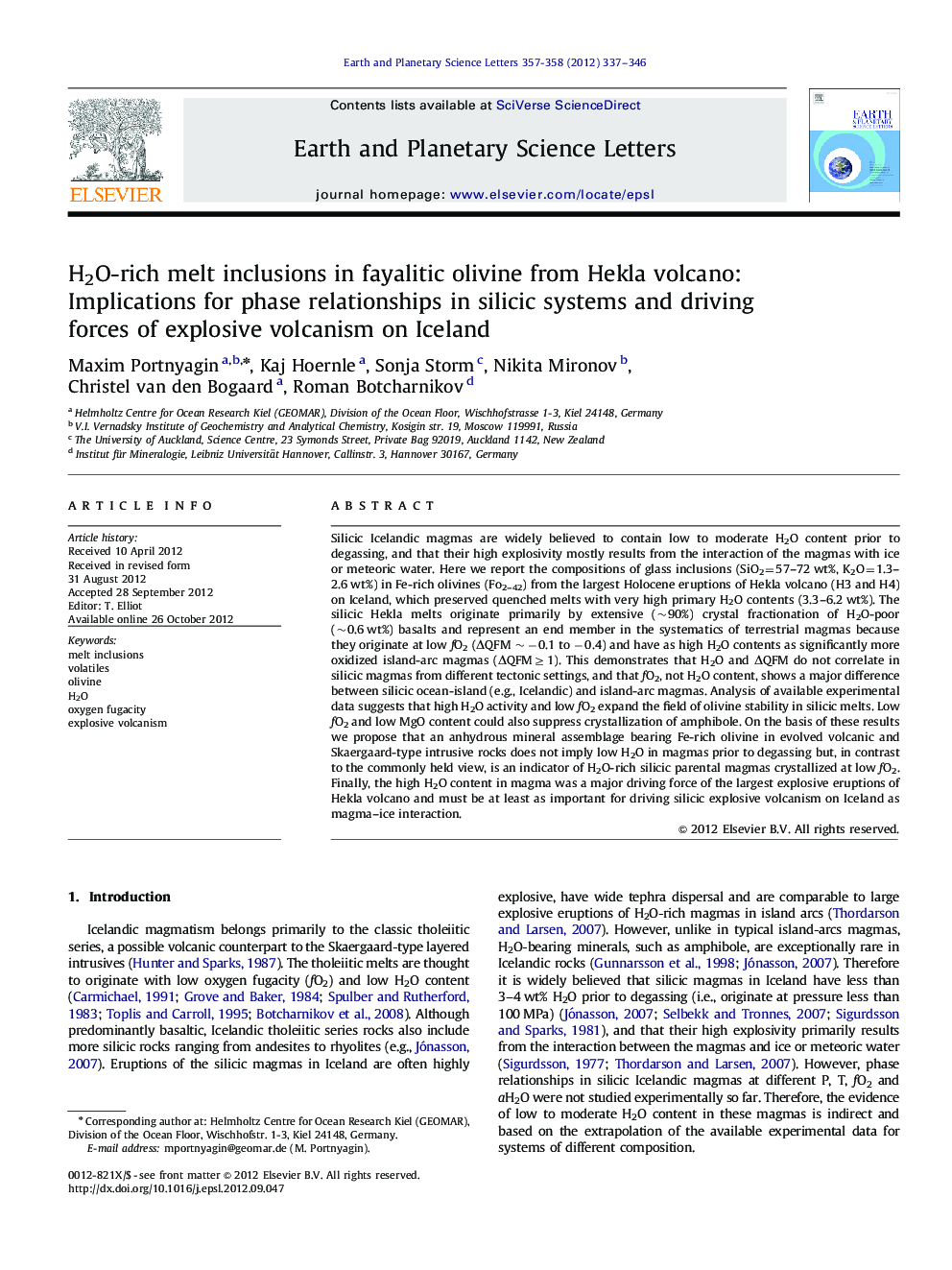| Article ID | Journal | Published Year | Pages | File Type |
|---|---|---|---|---|
| 4677305 | Earth and Planetary Science Letters | 2012 | 10 Pages |
Silicic Icelandic magmas are widely believed to contain low to moderate H2O content prior to degassing, and that their high explosivity mostly results from the interaction of the magmas with ice or meteoric water. Here we report the compositions of glass inclusions (SiO2=57–72 wt%, K2O=1.3–2.6 wt%) in Fe-rich olivines (Fo2–42) from the largest Holocene eruptions of Hekla volcano (H3 and H4) on Iceland, which preserved quenched melts with very high primary H2O contents (3.3–6.2 wt%). The silicic Hekla melts originate primarily by extensive (∼90%) crystal fractionation of H2O-poor (∼0.6 wt%) basalts and represent an end member in the systematics of terrestrial magmas because they originate at low fO2 (ΔQFM ∼−0.1 to −0.4) and have as high H2O contents as significantly more oxidized island-arc magmas (ΔQFM≥1). This demonstrates that H2O and ΔQFM do not correlate in silicic magmas from different tectonic settings, and that fO2, not H2O content, shows a major difference between silicic ocean-island (e.g., Icelandic) and island-arc magmas. Analysis of available experimental data suggests that high H2O activity and low fO2 expand the field of olivine stability in silicic melts. Low fO2 and low MgO content could also suppress crystallization of amphibole. On the basis of these results we propose that an anhydrous mineral assemblage bearing Fe-rich olivine in evolved volcanic and Skaergaard-type intrusive rocks does not imply low H2O in magmas prior to degassing but, in contrast to the commonly held view, is an indicator of H2O-rich silicic parental magmas crystallized at low fO2. Finally, the high H2O content in magma was a major driving force of the largest explosive eruptions of Hekla volcano and must be at least as important for driving silicic explosive volcanism on Iceland as magma–ice interaction.
► Melt inclusions in olivine from Hekla volcano contain up to 6.2 wt% H2O. ► Hekla basalts crystallize to rhyolites at H2O-undersaturated conditions. ► High magmatic H2O content drives silicic explosive volcanism on Iceland. ► H2O and fO2 do not correlate in silicic terrestrial magmas. ► H2O-rich silicic magmas crystallize anhydrous mineral assemblage at low fO2.
